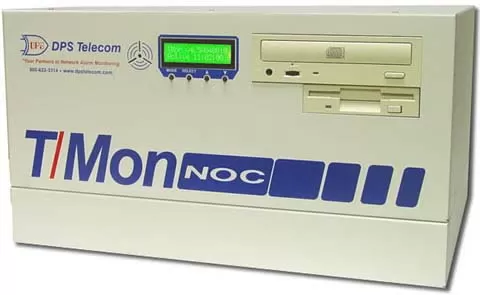Check out our White Paper Series!
A complete library of helpful advice and survival guides for every aspect of system monitoring and control.
1-800-693-0351
Have a specific question? Ask our team of expert engineers and get a specific answer!
Sign up for the next DPS Factory Training!

Whether you're new to our equipment or you've used it for years, DPS factory training is the best way to get more from your monitoring.
Reserve Your Seat TodayIf you've gone to an ice cream parlor lately, you know that having a choice can make it difficult to know what you want. DPS Telecom now offers two very different alarm masters: the heavy-duty T/Mon NOC and the medium-capacity T/Mon SLIM. How do you know which one's right for your network?
Selecting the right alarm master can be tricky, but you can identify the most important factors for making your decision. The key questions are:
Here are some typical scenarios of where you might currently be with your alarm monitoring, and what is the right alarm master for where you are:

If you're only monitoring a few sites, you might not need an alarm master at all. The NetGuardian 832A remote telemetry unit provides standalone local alarm monitoring capability that lets you monitor alarms directly from the RTU.
With the NetGuardian 832A's built-in Web Browser Interface, you can view alarms and operate control relays from any computer on your LAN - no master required. And the NetGuardian's pager and email notifications will send alarm notices directly to your pager or email in-box, giving you very easy 24/7 unmanned alarm notification.
If you're working with a small number of sites, and you don't need a central system for alarm presentation or notification, a small network of NetGuardian 832A units can provide all the monitoring you need.
But when your network starts growing, you should think about upgrading to a T/Mon alarm master system. If you have more than 6 or 7 sites, keeping track of all your alarms on separate pagers and web browser system gets complicated. At that point, you need central alarm presentation, and you should start looking at a T/Mon SLIM system.

The new 1 RU T/Mon SLIM is a just-right solution for when you need more than individual RTUs, but you don't need the full power of T/Mon NOC. T/Mon SLIM provides all the same alarm monitoring capabilities as T/Mon NOC, but at a capacity suitable for small and medium networks.
T/Mon SLIM can monitor up to 64 network devices or 7,500 discrete alarm points. Primarily designed for modern LAN-based network environments, T/Mon SLIM provides four serial ports for connecting legacy devices. Occupying only 1RU of rack space, T/Mon SLIM can easily fit into any equipment room.
Despite its slim physical form factor and medium capacity, T/Mon SLIM has all the software capabilities of T/Mon NOC. That gives you several advantages over monitoring with just RTUs. With T/Mon SLIM, you can:
When should you move up to T/Mon SLIM? Let's compare T/Mon SLIM to the NetGuardian 832A:
T/Mon SLIM is also a great upgrade choice for users of older single-user monitoring software like T/MonSC and T/MonDL.

If your network grows beyond a certain level of size and complexity, you need the most powerful alarm monitoring system available - T/Mon NOC.
T/Mon NOC can collect up to 1 million discrete alarm points from any number of remote sites and devices. With 24 serial ports, T/Mon NOC comfortably supports both LAN devices and large numbers of serial devices. T/Mon NOC has a more powerful processor than T/Mon SLIM, which makes it a better choice for heavy computation tasks like ASCII/TL1 processing or protocol mediation.
T/Mon NOC is the same kind of device as T/Mon SLIM, but it is much more powerful. T/Mon SLIM and T/Mon NOC share a lot of the same capabilities, but T/Mon NOC can apply those capabilities to a larger number of alarms and devices, and T/Mon NOC has the processing power to run several different operations simultaneously.
You should move up to T/Mon NOC if you:
If your network has grown very large, you may have reached a point where several different departments are responsible for different segments of the network. People working at the edge of the network may only need to see alarms from their network segment. People working at the center may want to see alarms from the entire network, but not is fine detail.
At this scale, the best solution is to have multiple T/Mon SLIM units and T/Mon NOC working together. Each department in charge of a network can have its own T/Mon SLIM, monitoring the alarms that the department is responsible for. Each T/Mon SLIM unit filters and forwards alarms to the central T/Mon NOC.
This configuration provides the ultimate level of flexibility for managing large networks. Individual departments can manage their alarm monitoring in the way that best supports their operations, without affecting how alarms are viewed at the central NOC.
Each individual department can configure its T/Mon SLIM to monitor as many fine detail alarms as needed, but personnel at the central NOC don't have to support or be bothered by more alarms than they need to see.
Get Expert Advice to Help You Determine Your Network Monitoring Needs
You don't have to figure out everything on your own ... a free web consultation with a DPS telecom Sales Engineer can help you determine the right network monitoring architecture for your network's needs. There's no obligation to buy - no high-pressure salesmen - just useful information on on you can start solving your toughest monitoring problems.
Register here for your free Web demo of T/Mon NOC, T/Mon SLIM and the NetGuardian 832A
or call 1-800-693-0351 for details
To receive a price quote or ROI analysis...
Call 1-800-693-0351